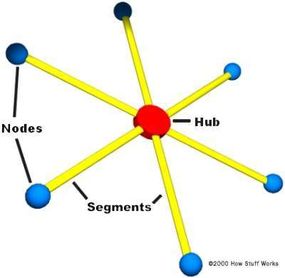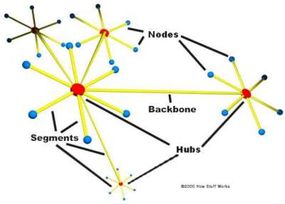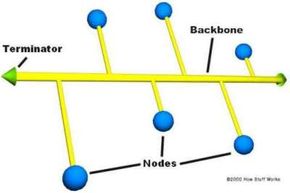Network Topologies
Some of the most common topologies in use today include:


- Bus - Each node is daisy-chained (connected one right after the other) along the same backbone, similar to Christmas lights. Information sent from a node travels along the backbone until it reaches its destination node. Each end of a bus network must be terminated with a resistor to keep the signal that is sent by a node across the network from bouncing back when it reaches the end of the cable.
- Ring - Like a bus network, rings have the nodes daisy-chained. The difference is that the end of the network comes back around to the first node, creating a complete circuit. In a ring network, each node takes a turn sending and receiving information through the use of a token. The token, along with any data, is sent from the first node to the second node, which extracts the data addressed to it and adds any data it wishes to send. Then, the second node passes the token and data to the third node, and so on until it comes back around to the first node again. Only the node with the token is allowed to send data. All other nodes must wait for the token to come to them.
- Star - In a star network, each node is connected to a central device called a hub. The hub takes a signal that comes from any node and passes it along to all the other nodes in the network. A hub does not perform any type of filtering or routing of the data. It is simply a junction that joins all the different nodes together.
- Star bus - Probably the most common network topology in use today, star bus combines elements of the star and bus topologies to create a versatile network environment. Nodes in particular areas are connected to hubs (creating stars), and the hubs are connected together along the network backbone (like a bus network). Quite often, stars are nested within stars, as seen in the example below:
Advertisement
